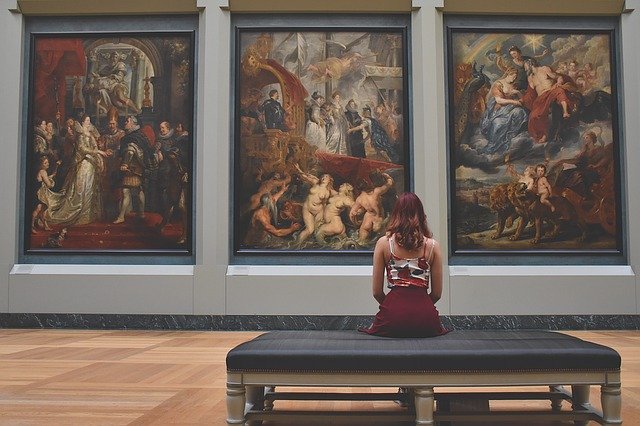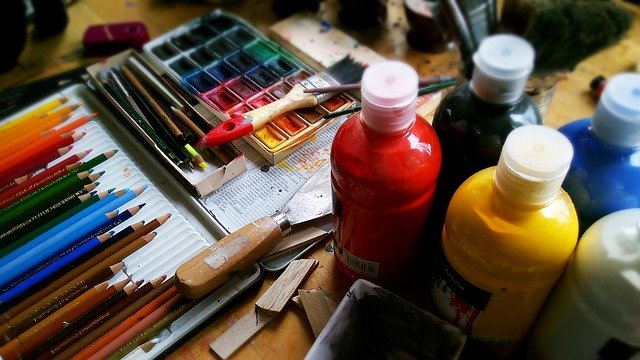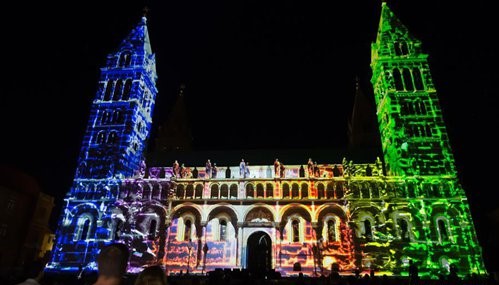Painting museums of 2020

Painting Museums - The National Gallery Museum
National Gallery Museum’s History
Located at the northern side of the Trafalgar Square in Westminster, The
National Gallery Museum is home to Britain’s national collection of European
masterpieces and art.
The gallery was founded in the year 1824 when the British Government got 38
paintings from the estates of a merchant named John Julius Angerstein.
The
collection was first introduced in the Angerstein’s house, May 10th of that same
year but later on, the exhibit was reopened to the public mass in 1838 in the now
current premise.
This was constructed to be a neoclassical structure by Greek
revival architect named William Wilkins. It was continued to have expansions in the
years 1860, the year 1876, 1886, and 1975.
During the 1991, further expansion was
made because of the addition of the Sainsbury Wing by an architect named Robert
Venturi. Not until the opening of the Tate Gallery, the National Gallery Museum was
also home to displays of modern British art.
To add, since the year 1856, the museum
had become responsible for historical paintings to be homed in the National Portrait
Gallery.
Currently, the collection of the National Gallery Museum is now around 2, 000
artworks and is recognized as the most accurate representation to sample European
Paintings in the world.
It has the most number of relevant collections from the
Renaissance era, outside Italy from the works of painters like Venetian and
Florentine who were considered art masters during that era. The National Gallery
Museum also holds a good number of impressive works by various Spanish, Flemish,
French, Dutch, and British painters of the 15th to 18th Century.
Among noted artists
said to be represented by the Museum are renowned painters, Raphael, Vermeer, and
Leonardo. The museum also features a small collection of French Postimpressionist
and Impressionist paintings that were deemed to be notable.
Most of which collection
that has been mentioned is currently on display.
Art Exhibitions at Present
The National Gallery museums hold art exhibitions to add to the entertainment and
knowledge of those who visit. Here are the exhibitions featured in the museum today.
Sorolla: Master of Light exhibition is dedicated to the Spanish Impressionist,
Sorolla and is the first one to happen in over a century. Known for being the master
of light, his works from garden views, bather scenes, vivid landscapes, in which he
is famous for.
The exhibition also included his portraits, painting of the genre of
having a Spanish life, landscapes, and 58 works covering Sorolla’s career-which
majority of the works are being transported from afar and from private collections.
Also featured now in the National Gallery Museum is the exhibition, “Sea Star: Sean
Scully at the National Museum” that is open and available from April 13 until August
11th, 2019.
A new work of Sean Scully that was inspired by Jason Mallord William
Turner’s, “The Evening Star” and of the National Gallery Collections will be
featured in the exhibition.
Sean Scully is known American-based, Irish-born painter for his abstract works that
were created through panels painted with oil and most often thickly applied with
paint to add a textured surface and create a richer feel of his paintings.
Scully
induces architectures and landscapes, coastlines, horizons, and fields by using
motifs of chequerboards and/or stripes. This painter is known for his contemplative
forms of art, which reminds him of significant moments and personal experiences.
The
exhibition clocks Scully’s journey as a painter who is full of deep admiration for
compositions, colors, and his belief in the strong power of painting.
The Take One Picture Program of the museum is now back and is featuring Joseph
Wright ‘Of Derby’.
Each year, as part of the program, the National Gallery Museum
invites children from primary schools nationwide to focus and examine their
paintings and think of creative responses to its composition, historical context,
themes, and the subject matter. This year, schools have chosen to respond to Joseph
Wright ‘Of Derby’s, “An experiment on a Bird in the Air Pump.”
This painting was chosen and explored from a wide range of subjects which was: to
depict its value when it comes to entertainment, as a scientific experiment, the
human drama present in the domestic and night-time setting, and its alignment to the
reference to the Age of Enlightenment. This year’s Take One Picture Program will
feature works of children from 31 primary schools.
The showcase of the exhibition
will show the fullness of how the children creatively responded to the painting of
Wright. The exhibit will be available from May 9th until August 11th, 2019.
The Painting Department of the Louvre Museum
History of the Louvre Museum
The Louvre nowadays is hailed as the biggest museum in the world and is home to
several remarkable artworks in history. The museum sits near the banks of the Seine
River in Paris, which is also a scenic spot.
The Louvre was originally built to be a fortress during the year 1190, but it was
renewed and reconstructed as a palace during the 16th century. At the times of being
a royal residence, almost every monarch who resided here expanded the Louvre and
presently, the museum covers about 652,300 square feet or 60,600 in square meters.
Upon 1682 came when Louis XIV moved his residence to the Versailles the Louvre
became home to many art academies and features the members works in it as well.
August 1793 was when The National Assembly now opened the Louvre as a museum but yet
again closed in the year 1796 due to structural problems.
During Napoleon’s time, he
expanded the collections in it during 1806. In his honor, the museum’s name was
changed to Musee Napoleon.
After Napoleon’s expansions to the Louvre, it was continued to be expanded. The
Louvre’s constructions and expansions were finished in the 19th Century upon reign
on Napoleon III and were returned to its original name as The Louvre Museum.
About Louvre’s Painting collections: Its History
The louver’s collection of great paintings dates all the way back to the reign of
Francis I in France. He wanted to create an art gallery in his chateau at
Fontainebleau, which can match those galleries of Italian places.
Francis, I
obtained pieces from renowned Italians artists such as Raphael and Michaelangelo. He
even got the chance to invite Rocco, Primaticcio, and even Leonardo Da Vinci to his
court, which were also great historical art masters.
The French Royal Collections
had continued a steady growth because of successive sovereignties made their
additions as well, mirroring the fashions and taste during their time.
One of the
great examples for this is Louis XIV’s purchase of collections from a banker named
Jabach. Louis XIV is also responsible for the expansion of the Italian Painting
collections in the museum.
A series of French works and the 1st ever-Spanish
Painting was also added during the reign of Louis XIV. Works from Northern schools
took form during the 17th century but most was during the 18th.
In the year 1793, all these works formed Louvre’s center collection of the Louvre’s,
“Museum Central des Arts.” During the 19th Century, significant French noble
collections and spoils of the conquest of Napoleon acquired more relevant pieces.
Other paintings that can be seen in the Louvre aside from these were either acquired
through donation or Parish salons and some are purchased from certain individuals.
The collection split up though upon the opening of Musee d’Orsay in the year 1986.
The works, which were painted after the 1848 revolution (such would include works of
impressionist and pictures by Courbet) were transferred from the Louvre to the Musee
d’Orsay.
How are the Paintings displayed?
The entire first floor of the Denon wing is occupied by Louvre’s collections of
Italian and Spanish Paintings. The Louvre’s painting collections of the Northern and
French schools takes up the entire 2nd floor of the Richelieu and Coeur Caree wing
and are all arranged in chronological order.
Up to date, this is the latest
arrangement of the Louvre’s 300-year history of great painting galleries.
Originally, the paintings were displayed in the Salon Carre and the Grande Galerie
but later on was expanded to the rooms surrounding the Coeur Caree which was the
exact apartment were artists of the 18th Century lodged. One fact indeed is that
some of the paintings are exhibited close to where they were actually made in the
first place.
Series of paintings of artists like Hubert Robert portrays the galleries older
stages and how the paintings were originally hung before becoming its state today.
The grand, opaque display of those from the 18th and 19th centuries made a way to a
more sensible and less crowded display now in the 20th Century, mirroring the art
history, developments, and new researches regarding the schools and painters
responsible for the works.
Louvre’s Other Featured Works
The Louvre’s collections are abundant and are not just about its paintings. From
Ancient Greek, Egyptian Antique collections, and even Roman Sculptures can be seen
here.
Yes, it is home to most notable paintings by old master renowned before the
1800s, but it also features crown jewels and other great artifacts from French
nobility. Its works are dated from the 6th Century B.C to 19th Century A.D.
There
are over 35,000 works and artifacts on display now in the Louvre and is divided into
8 departments.



